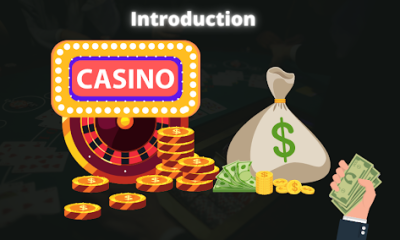Blog
The Golden Rule of Assessment: Treating Students as We Would Want to Be Assessed

Assessment plays a pivotal role in education. It serves not just as a tool to gauge knowledge, but also as a means to inspire growth, build confidence, and foster a sense of fairness among students. However, educators often face a challenging question: how do we create assessments that are equitable, effective, and humane? The answer lies in the golden rule of assessment: treat students as we would want to be assessed.
This principle encourages educators to approach evaluation with empathy, understanding, and a commitment to fairness. It requires looking beyond grades and percentages to consider the broader impact of assessments on a student’s learning journey and emotional well-being. Let’s explore how this golden rule can be applied practically in educational settings, along with real-world examples and actionable insights.
1. The Importance of Empathy in Assessment
Empathy in assessment begins with understanding the perspective of students. If we reflect on our own experiences as learners, we’ll recall the anxiety, pressure, and even frustration that often accompanies exams or assignments. By putting ourselves in our students’ shoes, we can create assessments that are not only rigorous but also considerate of their challenges and circumstances.
For instance, consider a student struggling with test anxiety. A traditional high-stakes exam may not accurately reflect their understanding of the subject. Instead, offering alternative forms of assessment, such as project-based evaluations or open-book tests, can provide a more comprehensive view of their abilities while reducing unnecessary stress.
2. Designing Fair and Transparent Assessments
Fairness is a cornerstone of ethical assessment. Students should feel that the evaluation criteria are transparent, consistent, and free from bias. Ambiguity in instructions or unclear grading rubrics can lead to frustration and perceptions of unfairness.
A practical way to ensure fairness is by providing detailed rubrics that outline expectations for assignments or exams. For example, if an essay requires critical thinking, creativity, and proper citation, the rubric should clearly explain how each of these elements will be weighted. Sharing these rubrics in advance allows students to understand how they will be assessed and prepares them to meet expectations.
3. Offering Constructive Feedback
Feedback is one of the most powerful tools for learning. However, it must go beyond simply pointing out mistakes. Constructive feedback highlights areas of improvement while acknowledging strengths, creating a balanced approach that motivates students to do better.
Imagine a student who submits an essay that lacks proper structure but demonstrates strong arguments. Instead of focusing solely on the flaws, feedback could include comments like, “Your arguments are compelling and well-researched. To improve, try organizing your points more clearly to enhance readability.” Such feedback not only guides improvement but also boosts the student’s confidence.
4. Emphasizing Growth Over Grades
Assessments should prioritize learning and growth rather than merely assigning a grade. Students need to see assessments as opportunities to develop skills and knowledge, not as final judgments of their abilities.
For example, implementing formative assessments—such as quizzes, drafts, or peer reviews—allows students to receive feedback and make improvements before the final submission. This approach fosters a growth mindset, encouraging students to view mistakes as learning opportunities rather than failures.
5. Providing Flexibility and Accommodations
Every student is unique, with different learning styles, strengths, and challenges. Rigid assessments can disadvantage certain groups, such as students with disabilities or those facing personal difficulties. By offering flexibility and accommodations, educators can create a more inclusive environment.
For instance, allowing students to choose from multiple assessment formats—such as written essays, oral presentations, or creative projects—gives them the freedom to showcase their strengths. Similarly, providing extended time for students with learning disabilities ensures that everyone has an equal opportunity to succeed.
6. Encouraging Self-Assessment and Reflection
An often-overlooked aspect of assessment is empowering students to evaluate their own work. Self-assessment fosters critical thinking and self-awareness, helping students take ownership of their learning.
A simple yet effective strategy is to include reflection prompts as part of the assessment process. For example, after completing a project, students could answer questions like, “What did I do well?” and “What would I do differently next time?” These reflections encourage a deeper understanding of their learning process and areas for improvement.
Real-World Example: The “Student-Centered Assessment” Approach
Many progressive schools and universities have adopted student-centered assessment practices that align with the golden rule. For instance, Finland’s education system emphasizes formative assessments over standardized testing, focusing on individualized feedback and student growth. Teachers work closely with students to set learning goals and tailor assessments to their needs, creating an environment where students feel supported and valued.
Similarly, some colleges in the United States have implemented competency-based education, where students progress at their own pace, demonstrating mastery of skills through personalized assessments. These approaches highlight the effectiveness of treating students as active participants in the assessment process rather than passive recipients of grades.
Conclusion: Making the Golden Rule a Reality
The golden rule of assessment—treating students as we would want to be assessed—is more than just a principle; it is a call to action for educators. By embracing empathy, fairness, and flexibility, we can transform assessments into meaningful experiences that inspire learning and growth.
As educators, let’s challenge ourselves to create assessments that reflect our best intentions for our students. Let’s listen to their feedback, adapt our practices, and continuously strive to improve. After all, when students feel respected and understood, they are more likely to engage deeply with their learning and reach their full potential.













